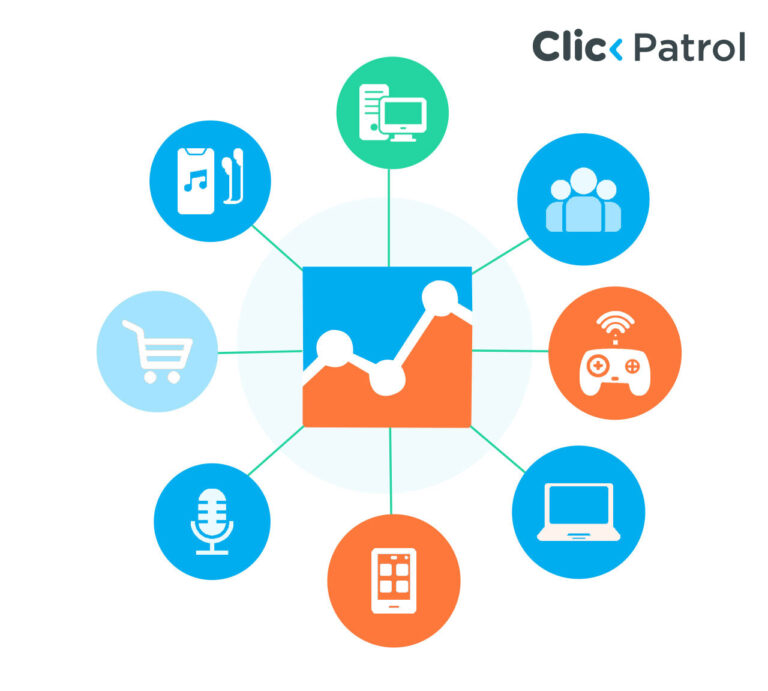
Types of Bots
Abisola Tanzako | Sep 04, 2024

Table of Contents
Various types of bots have become an essential part of our lives, and they have numerous advantages and disadvantages across various sectors. There are good bots, bad bots, and malware-distributing bots among all of these bots. Knowing the different kinds of bots available should help you recognize and use the beneficial ones and help you avoid the bad ones.
This article will examine several types of bots, giving you the knowledge and ability to choose wisely, profit from them, and minimize threats.
What are bots
A bot is an autonomous software program that works over a network to complete repetitive activities. It mimics human behavior by following established rules, but it does so more quickly and accurately. In addition, a bot for instance, can converse with users on websites or browse through material.
Although some types of bots are helpful, others are maliciously designed by outside groups. Businesses secure their networks from malicious bots and employ beneficial bots to enhance their operational effectiveness.
Advantages of bots
1. Scalability: Bots are scalable solutions since they can manage many simultaneous interactions. Businesses can invest in human resources to accommodate an expanding user base.
2. Task automation: Businesses and individuals can save time and effort by utilizing bots to automate repetitive chores. Automation raises productivity, while human operators can concentrate on more strategic and innovative tasks.
3. Enhanced efficiency: Bots run nonstop around the clock to guarantee constant service availability. For instance, they can instantly respond to often-requested customer service queries, cutting down on response times and raising customer satisfaction.
4. Data analysis: Task automation bots can efficiently and precisely process enormous volumes of data. This facilitates gaining knowledge, making data-driven choices, and spotting patterns or trends that may need to be noticed.
5. Improved user experience: Chatbots can provide individualized customer service and e-commerce support by assisting users with procedures and making recommendations for relevant goods and services based on their interests. This raises the possibility of conversions and enhances the user experience overall.
Disadvantages of bots
1. Content manipulation: Bots can be used to influence social media trends and online debates, propagating false information and distorting public opinion.
2. Data privacy breaches: Bots may try to take advantage of system flaws to obtain sensitive user information without authorization, which could result in identity theft and other privacy violations.
3. Erosion of trust: Malicious bot assaults can erode users’ faith in websites and companies, impacting user loyalty and engagement.
4. Fraud and theft: Malicious bots can be used for a variety of fraudulent operations, including account takeover, credential stuffing and cracking, PII theft, the publishing of fake reviews, and propaganda campaigns. Developers and platform owners need to implement security measures, including rate limits, bot detection software, CAPTCHAs, and strong authentication procedures, to reduce these dangers.
Regular upgrades and bot activity monitoring are also crucial for detecting and eliminating such risks.
Types of bots and their purposes
Bots can be either good or bad, depending on their intended use and how they affect websites, mobile applications, and APIs.
1. Good bots
Good bots are those that are made to carry out proper tasks. In contrast to malevolent bots, good bots carry out ethical and helpful tasks. Below are some examples of good bots
- Chatbots: The main purpose is to converse with users and offer help or information. They comprehend user inquiries and provide pertinent answers; chatbots employ artificial intelligence (AI) and natural language processing (NLP) technologies. Chatbots offer instantaneous responses, better customer service, and an improved user experience on social media and websites.
Additionally, they can free up human agents to deal with more difficult issues. - E-commerce recommendation bots mainly suggest goods or information based on users’ histories and preferences by analyzing user behavior and using algorithms. By presenting pertinent products and improving the shopping experience, e-commerce recommendation bots increase user engagement, conversion rates, and customer happiness.
- Web scraping bots: The main function of these bots is to extract data from websites for analysis or other uses. Often without the website owner’s permission, web scraping bots browse websites and gather particular information. Neutral to negative web scraping has a place in legitimate applications such as data analysis, but if done excessively, it can result in copyright violations, data breaches, and server overload.
- Transactional bots: These bots facilitate transactions and user account management. They communicate with users to complete financial transactions, make reservations, or handle accounts. They make interactions more effective and enhance customer service by streamlining procedures, reducing human mistake rates, and providing convenience for users.
- Virtual assistants: (e.g., Siri, Google Assistant, Alexa) Its main purpose is to help users with different tasks and give information. Virtual assistants interpret and respond to user requests using natural language processing (NLP), artificial intelligence (AI), and cloud-based processing.
- Search engine bots (Spiders or Crawlers): Their main function is indexing webpages for search engines. Search engine bots build an index that enables search engines to provide consumers with relevant results, explore websites, and gather data. Thanks to search engine bots, users can locate the information they need more quickly.
2. Bad Bots
Bad bots are automated programs created to carry out harmful tasks. They sound easy enough, but they may be a serious threat. Bad bots can function as malware, taking advantage of system holes to access user accounts without authorization. They may also target specific businesses in an attempt to damage their reputation on social media by spreading false information or bombarding everyone they know.
These bots are typically used by cybercriminals and other individuals attempting to take advantage of the weaknesses in certain users. Below are some examples of bad bots.
- Credentials stuffing bots: These bots try to access user accounts by utilizing stolen credentials from data breaches. If they are successful, they may be able to access user accounts without authorization, which might result in fraud, identity theft, and unwanted access to private data.
- DDoS (Distributed Denial of Service) bots: DDoS bots overwhelm a website’s server with excessive traffic, rendering it inaccessible to authorized users. This may lead to lost sales, downtime, and reputational harm for a website.
- Spam bots: Spam bots post links, uninvited ads, or malicious content on social media, forums, and comment sections. This may irritate consumers, lower the standard of user content, and perhaps result in phishing attempts.
- Price scraping bots: These automated programs harvest pricing data from online retailers and manipulate the prices to undercut competitors. This may damage businesses and cause market distortion.
- Web scrapers: Bots known as web scrapers frequently use websites to gather data without authorization. Although not always malicious, certain online scrapers can overwhelm a website’s server, decreasing performance and elevating server expenses.
- Social media bots are automated accounts created to manipulate users by disseminating false information or amplifying particular content. They have the power to sway public opinion, trick users, and aid in the spread of fake news.
- Content scrapers: Content scrapers occasionally replicate and republish content from websites without giving due credit. This could lower the original website’s traffic and SEO rankings and also degrade the work of the content creator.
- Skimming bots: Skimming bots steal payment card details from e-commerce websites. These bots have the potential to breach security, steal data, and infect users’ devices.
- Click fraud bots: To earn income for the bot operator, click fraud bots manipulate the number of clicks on pay-per-click (PPC) advertisements or affiliate links. Advertisers may suffer monetary losses as a result, and the accuracy of ad campaign data may be compromised.
- Malware distribution bots: These bots spread malicious links and malware, which may breach security, steal data, and infect users’ devices.
Navigating the world of different types of bots
Bots are widely used in the digital sphere and impact various industries, both positively and negatively. Bots have many uses. However, one must be able to distinguish between good bots, like search engine crawlers, and bad bots, like spam credentials stuffing bots. Understanding these differences becomes crucial for optimizing their potential as businesses and individuals continue to integrate bots into their operations.
Therefore, it is important to identify these bots and put the proper security measures in place. Staying vigilant and proactive in monitoring bot activity can protect your digital assets. Keeping up with the evolving function of bots as technology develops can help you take advantage of their benefits while lowering their hazards.
FAQs
Q1: Are all web scraping bots harmful?
Only sometimes. While some online scraping bots are useful for legitimate tasks like data analysis, others might be dangerous if they collect data without authorization or overload a server, resulting in poor performance and higher expenses for the website owner.
Q 2: Can good bots ever turn bad?
Yes, even good bots can cause harm if they are not properly maintained. Overusing online scraping bots, for instance, might result in data breaches and copyright violations. To avoid unanticipated consequences, bot activity must always be closely watched and controlled.





